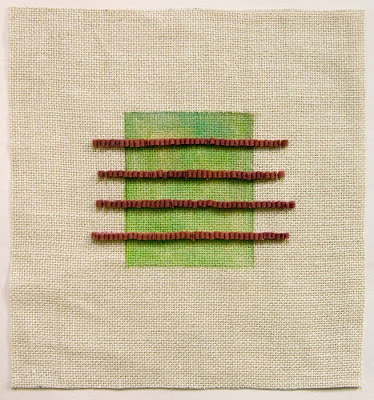
Velazquez,
The Waterseller, 1618-22; oil on canvas; 41 x 31 inches.
For many years, if I was asked to name my favorite artist, with no hesitation I acknowledged
Diego Velazquez. For me, there is no artist who captures, with mere paint, the actual life of a subject, a physical presence living and breathing. The early works, such as
The Waterseller above, have less of this breath, but are monumental descriptions of form and sympathetic portraits of ordinary people.

Velazquez,
The Dwarf Francisco Lezcano, 1642-45; oil on canvas; 42 1/8 x 32 5/8 inches.

Detail of
Francisco LezcanoSome of my favorite of Velazquez' portraits are those of the lesser people of his world, the dwarfs and jesters who he portrays with all the human empathy and seriousness an artist can possess. He applies paint in a free, fluid manner, softening the edges of forms: a head, its features, seem to move, as though we can see around the three dimensional body, bringing remarkable life to it.

Velazquez,
Juan de Pareja, 1650; oil on canvas; 32 x 27 1/2 inches.
I have spent a lot of time in front of this portrait, which is at the Metropolitan Museum of Art in NYC. It gives me the opportunity to marvel at the seemingly simple means Velazquez uses to transform his canvases into compelling, communicating characters.

Velazquez,
The Fable of Arachne or
The Spinners, 1657; oil on canvas; 86 1/2 x 113 3/4 inches.
Velazquez was also a very ambitious artist, and this painting, along with
Las Meninas at the Prado are overpowering, complex, and exciting, a swirl of forms in space. (The Prado has a wonderful
website here, where you can find all the great work in their collections, with high resolution images which enable close viewing of details.) When I was a young artist I also had grand ambitions, painting large narrative figure compositions, and looked to artists such as the Italians of the High Renaissance and Velazquez as models.
But now my ideas about my own work have changed, and my feelings about the great artists of the past along with them. I no longer want to have a "favorite artist"; I see so much that moves me and enriches my life and my work. Now I see the clarity of the artists of the
Quattrocento and their faith centered world as tremendously important, and I had overlooked them years ago. The panel paintings of Fra Angelico are among those that now thrill and inspire me.

Fra Angelico,
The Apostle Saint James the Greater Freeing the Magician Hermogenes, ca late 1420s; tempera and gold on panel; 10 x 8 7/8 inches.
There is a simplicity of form in these works, a stylization of plants and buildings, a shining brilliance of color, a classical structure of horizontal and vertical. In this painting, one of my favorites, the turmoil of devils is subdued in an overall narrative reticence, but within the subtle gestures are a world of feeling and belief.
In 2005-06, the Met mounted a
major exhibition of Fra Angelico with a terrific
catalog, from which I photographed these paintings. Looking at these small works, one stunning painting after another, was a magical experience. Their refinement and precise, loving touch have been a lesson to me as a tempera painter.

Fra Angelico,
The Decapitation of Saints Cosmas and Damian, ca 1440-42; tempera on panel; 14 11/16 x 18 1/8 inches.
Even within a gruesome scene of martyrdom there are delicately observed grasses and flowers and tall elegant trees standing as sentinels along with the human ones, as though to say that God's grace still exists in the world.

Fra Angelico,
Saint Nicholas Calms a Tempest at Sea and the Miracle of the Ration of Grain (detail), mid 1430s; tempera on panel; 13 3/4 x 24 1/4 inches.
The miracle in the story is heightened by the marvelous forms of curlicued mountains echoed in the swooping hulls at sea. Each detail is reverently rendered, from the clothing of officials and workers to the bins of grain.

Fra Angelico,
Scenes from the Life of Saint Nicholas (detail), ca. 1437; tempera on panel; 13 3/8 x 23 1/2 inches.
There are balanced geometries in the settings for Fra Angelico's tales, creating orderly spaces for the movement of figures.

Fra Angelico,
The Virgin Annunciate, ca. late 1420s; tempera and gold on panel; 12 3/8 x 10 inches.
Within the sensitively precise outlines of the Virgin is a life prior to the flowering of humanism, when humankind became the measure of all things. It is inward and reflects a life of faith, where the representation of things of this world are a hymn to a higher being. Although I am not a religious person, I find this philosophy of representation very appealing as I look around me, at nature and objects, even machines, and see the beauty within them.
 Toothed Circle, egg tempera on calfskin parchment, 4 3/4 x 7 inches.
Toothed Circle, egg tempera on calfskin parchment, 4 3/4 x 7 inches.

















































